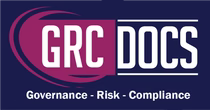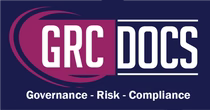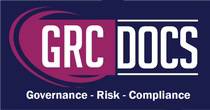Latest Developments: NIST Cybersecurity Framework 2.0 Status Update
Overview
The National Institute of Standards and Technology (NIST) Cybersecurity Framework (CSF) is widely recognized as the gold standard for improving cybersecurity practices across industries. With the release of version 2.0, organizations are eager to learn about the new updates and enhancements that will further strengthen their cybersecurity posture. This article explores whether NIST CSF 2.0 has been released and provides valuable insights on its significance for organizations striving to protect against cyber threats. Read on to discover the latest developments in the world of cybersecurity frameworks.

Understanding NIST CSF
NIST CSF, also known as the NIST Cybersecurity Framework, was developed by the National Institute of Standards and Technology to help organizations bolster their cybersecurity defenses. This framework provides a comprehensive and flexible approach to managing and mitigating cyber risks.
To truly understand the significance of NIST CSF 2.0, it is essential to grasp the key components of the framework. The core elements of the NIST Cybersecurity Framework (CSF) include Identify, Protect, Detect, Respond, and Recover. Each component focuses on different aspects of cybersecurity, from identifying potential risks to recovering from a security breach.
The Importance of NIST CSF 2.0
As technology continues to evolve at an exponential rate, so do the threats and risks associated with cybersecurity. In this fast-paced digital landscape, organizations must stay ahead of the curve to protect their sensitive data and systems from malicious actors. This is where the importance of NIST CSF 2.0 becomes evident. The latest version of the NIST Cybersecurity Framework is designed to address the ever-changing cybersecurity landscape and provide organizations with a robust framework to assess and enhance their cybersecurity posture. By incorporating feedback and lessons learned from previous versions, NIST CSF 2.0 offers a more comprehensive and adaptable approach to managing cyber risks.
With the introduction of new guidance, updates, and features, organizations can leverage NIST Cybersecurity Framework (CSF) 2.0 to better understand and prioritize their cybersecurity efforts. This framework enables organizations to identify vulnerabilities, implement protective measures, detect unauthorized activities, respond effectively to incidents, and recover quickly. By aligning their cybersecurity practices with NIST CSF 2.0, organizations can enhance their resilience, reduce the likelihood of successful cyberattacks, and safeguard their reputation and bottom line.
Updates and Improvements in NIST CSF 2.0
NIST CSF 2.0 brings several updates and improvements to the table, making it an even more valuable resource for organizations seeking to enhance their cybersecurity defenses. One notable change in this version is the increased emphasis on supply chain risk management. With supply chain attacks becoming more prevalent, the framework now provides guidance on how organizations can assess and mitigate risks in their supply chain.
Another significant update is the inclusion of a measurement framework. This allows organizations to quantify the effectiveness of their cybersecurity efforts, enabling them to track progress over time and make data-driven decisions to improve their security posture. Furthermore, NIST Cybersecurity Framework (CSF) 2.0 introduces a more user-friendly format and streamlined implementation guidance to simplify the adoption process for organizations of all sizes and sectors.
Implementation Considerations for Businesses
Implementing NIST CSF 2.0 requires careful consideration and planning to ensure its effectiveness within an organization's cybersecurity strategy. Here are some key factors for businesses to consider:
- Assessing the organization's unique needs: Every organization has different cybersecurity requirements based on factors such as industry, size, and risk appetite. It is essential to evaluate how NIST CSF 2.0 aligns with these specific needs and tailor the implementation accordingly.
- Establishing a cross-functional team: Implementing NIST Cybersecurity Framework (CSF) 2.0 involves collaboration across different departments, including IT, risk management, legal, and executive leadership. Forming a dedicated team comprising representatives from these areas can ensure comprehensive adoption and integration of the framework.
- Conducting a comprehensive gap analysis: Before embarking on the implementation journey, it is crucial to conduct a thorough assessment of the organization's current cybersecurity posture. Identifying gaps and areas of improvement will guide the implementation process and help prioritize actions.
- Defining measurable goals and metrics: The measurement framework in NIST Cybersecurity Framework (CSF) 2.0 allows organizations to establish measurable goals and track progress over time. Setting specific metrics aligned with the organization's cybersecurity objectives will enable continuous improvement and the ability to demonstrate the effectiveness of the framework.
By considering these implementation considerations, businesses can effectively leverage NIST CSF 2.0 to enhance their cybersecurity defenses.
Benefits of Adopting NIST CSF 2.0
Implementing NIST CSF 2.0 brings several key benefits to organizations looking to strengthen their cybersecurity posture. By adopting this widely recognized framework, businesses can:
- Enhance risk management: NIST CSF 2.0 provides a systematic and holistic approach to identifying and mitigating cybersecurity risks. It helps organizations prioritize their investments and actions based on the potential impact of each risk. By integrating the framework into their risk management processes, businesses can make informed decisions and allocate resources effectively.
- Improve incident response capabilities: NIST CSF 2.0 emphasizes the importance of maintaining an effective incident response plan. Organizations can leverage the framework to enhance their ability to detect, respond to, and recover from cyber incidents. This proactive approach minimizes the impact of breaches and ensures a swift and effective response to any security events.
- Strengthen regulatory compliance: Many regulatory bodies, such as the GDPR and HIPAA, recognize the NIST Cybersecurity Framework (CSF) as a reliable cybersecurity framework. By implementing NIST CSF 2.0, organizations can align their security measures with regulatory requirements, ensuring compliance and avoiding potential fines or legal consequences.
- Enhance stakeholder confidence: Demonstrating a commitment to cybersecurity is crucial for maintaining trust with customers, partners, and shareholders. Implementing NIST CSF 2.0 enables organizations to showcase their dedication to protecting sensitive data and information assets, enhancing their reputation and building trust among stakeholders.
By adopting NIST CSF 2.0, organizations can gain these valuable benefits and establish a robust cybersecurity framework that aligns with industry best practices.
Conclusion
In this blog, we have explored the benefits of implementing NIST CSF 2.0 and how it can significantly enhance an organization's cybersecurity posture. By adopting this framework, businesses can enhance their risk management processes, improve incident response capabilities, strengthen regulatory compliance, and enhance stakeholder confidence. As the cybersecurity landscape continues to evolve, it is crucial for organizations to stay updated and aligned with industry best practices. NIST Cybersecurity Framework (CSF) 2.0 provides a comprehensive and flexible framework that can adapt to the ever-changing threat landscape. By integrating it into their existing cybersecurity programs, organizations can establish a robust and proactive approach to security.





